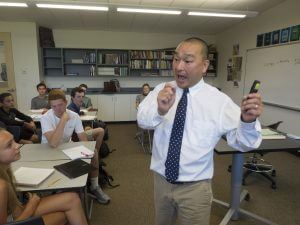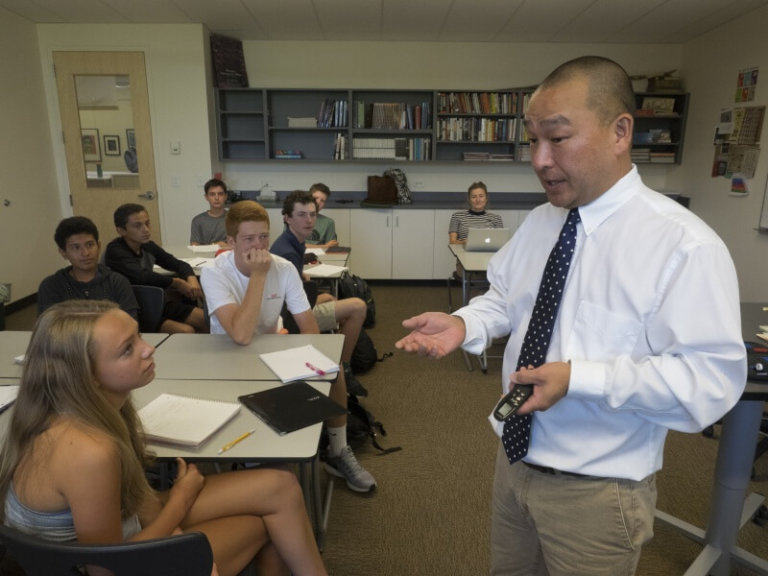Student choice is a powerful thing. We know adolescents crave autonomy and independence, so when they have opportunity to make educational choices for themselves, they frequently step up to the challenge. Many students, especially as they gain maturity in the junior and senior years, can take charge of their learning and direct, to a large extent, their own educational journey. Therefore, there has been much discussion lately about student-centered education and even “co-constructed knowledge,” through which students have even more choices than ever.
Yet, given the constraints of schedules and staffing, how much choice is really feasible for students in a high school? In CA’s Upper School, we have tried to strike a balance between a fairly prescribed curriculum with just a few choices in Ninth and Tenth and a much more wide-open curriculum with ubiquitous choices in the Eleventh and Twelfth grades. For instance, one of the most popular aspects of the English and history curriculum has been the variety of electives available once students reach their junior year. Students can take courses as different as Economics and Modern Society, Literature of Place and Self, or Latin American History, just to name a few.
As I review course registration for our rising juniors and seniors, I am struck by how different they are from each other: no two schedules look alike. While this poses a challenge for our registrar, who must somehow get all these requests put into an actual master schedule—which she is able to do at about a 98% success rate—I applaud the fact that our students are taking charge of their own choices and deciding amongst a host of great options.
A trimester calendar allows us to offer even more choices, with students selecting from a menu of options throughout the school year. Especially in the humanities and the arts, the rotation of offerings allows students to be exposed to more options from our very full catalog. Again, the result is greater individualization, which typically leads to greater student autonomy and satisfaction.
Still, too much choice can be problematic. Research shows that actually having too many choices can be overwhelming (see Barry Schwartz, The Paradox of Choice). History teacher and REDI Lab co-director Paul Kim’s e-mails conclude with a quote from design theorist Bruce Mao that asks “Now that we can do anything, what will we do?” I have always found that quotation both liberating and terrifying. Can we really do anything? An article in Education Week recently cautioned that “teachers cannot expect that increasing student choice and freedom will automatically improve student learning. Unfortunately, unlimited choice can set students up to fail.” Obviously there must be a balance. With too many choices and too little direction about those choices, students may end up as unfocused as many of us feel in the cereal aisle at the supermarket. Advising and teacher mentoring is key to helping students narrow down options and make wise choices.
The other phenomenon for many seniors in April involves choosing which college to attend. Some students are thrilled with the possibility of more than one good outcome; others find themselves paralyzed by the idea that they must figure out which is the “perfect” college. Again, the wise advice of college counselors and other trusted adults and peers hopefully leads students to understand there are good ways to sort through their options. We also want them to gain the insight that no choice is ever really perfect anyway; there are pros and cons to virtually every decision we make. The familiar phrase “It’s a good problem to have” rings true for me when I see a student wrestling between two colleges or sometimes among several good options.
Finally, on the matter of choice, we also know that families have many choices in the Denver metro area when it comes to schools. This educational market has exploded in the past decade, coinciding with Denver’s population increase and more innovation and entrepreneurial educators in the area. I never take for granted the fact that families have chosen CA, and we strive to reinforce why we think they’ve made a great choice every day. 
